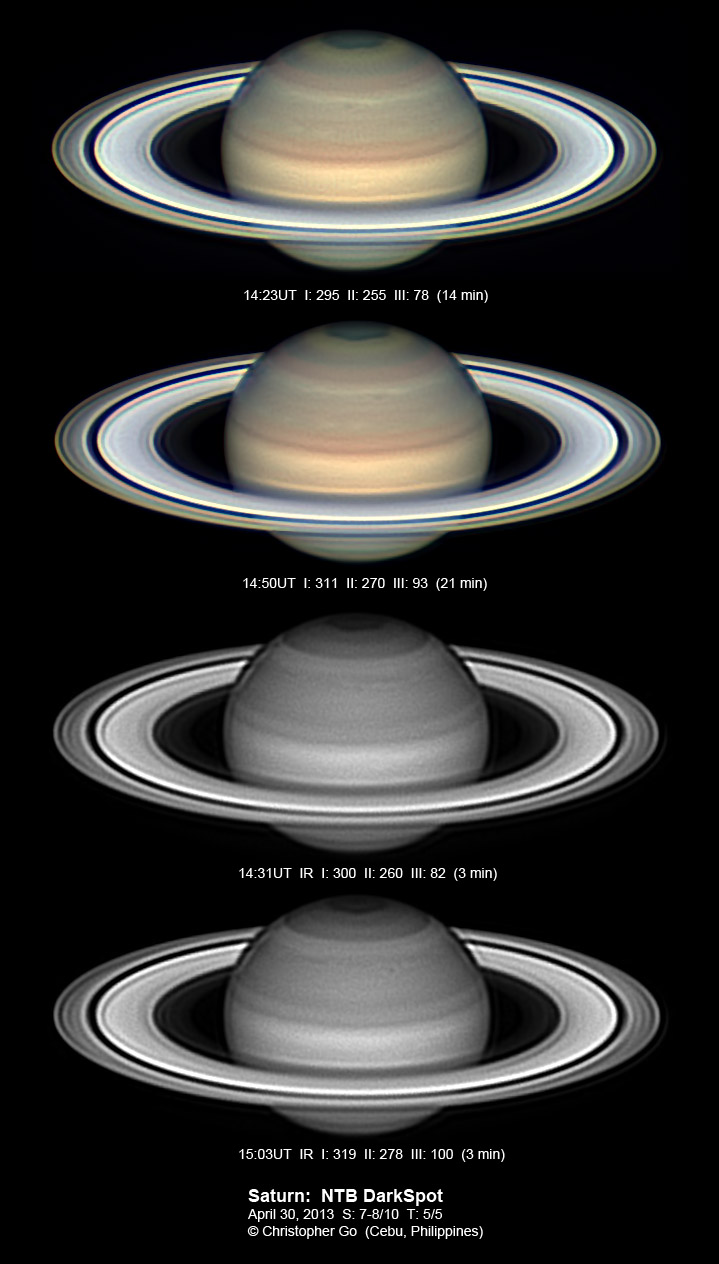| May 17,
2013 Condition wasn't great today.
I had to start imaging early before clouds rolled in. I finally
got to test the new
ZW Optical ASI120MM Camera.
This camera is based on the MT09M04 monochrome CMOS chip which is much
more sensitive in visible light than the venerable Sony ICX618. I
would like to thank Sam Wen for the camera.
Here are my first impressions. The image
scale is HUGE! This is a 3.75 micron pixel size! I tried to
do some adjustment in my system to reduce the focal length but gave up.
I went ahead and image with my usual configuration. I was
surprised that the exposure time was THE SAME as my Flea3 despite the
30% increase in images scale. I stacked the images as usual but REDUCED
the image scale by 30% before final processing. I derotated 6 sets
of RGB before clouds rolled in and heavy rain last night.
Despite the terrible conditions, the final images
looks acceptable.
The Polar hexagon is distinct. The white
band on the NNTZ is distinct. This is the remnant of the Great
storm of 2010.
Will test this camera in the coming days...
|


















